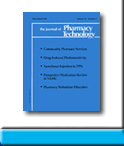 |
 |
LANTHANUM CARBONATE TREATMENT OF HYPERPHOSPHATEMIA IN END-STAGE RENAL DISEASE
Christine M Cheng
To request full article click here.
OBJECTIVE: To review the literature on the safety and efficacy of lanthanum carbonate for the treatment of hyperphosphatemia in patients with end-stage renal disease (ESRD).
DATA SOURCES : Primary literature was obtained through a PubMed search (1966–September 2005) using the
key terms Fosrenol and lanthanum carbonate. The FDA review, manufacturer-provided data, and published
abstracts on lanthanum carbonate were also reviewed and evaluated.
STUDY SELECTION AND DATA EXTRACTION: Human studies in which lanthanum carbonate was compared with
placebo or active control for the treatment of hyperphosphatemia secondary to renal disease were included.
Dose-titration studies were excluded.
DATA SYNTHESIS : Phosphate-lowering agents and dietary phosphate restriction are currently the first-line therapies for initial treatment of hyperphosphatemia associated with ESRD. Lanthanum carbonate is a highly effective non–aluminum, non–calcium-containing phosphate binder. It is the only FDA-approved phosphate binder that is available as an unflavored chewable tablet that may be taken without water.
CONCLUSIONS: Clinical studies demonstrate that lanthanum carbonate is more effective than placebo but as or less effective than standard therapies in lowering serum phosphate to target levels. When compared with calcium salts, lanthanum carbonate had a lower incidence of hypercalcemia and a lower risk of patients developing bone disease. However, in clinical trials, patients receiving lanthanum carbonate had greater discontinuation rates, some due to adverse events. The long-term safety data (>5 y), including the potential for lanthanum accumulation in the bone with subsequent development of osteodystrophy, remain unknown.
J Pharm Technol 2006;22:99-104.
ACPE Universal Program Number: 407-000-06-051-H01
To request full article click here.
|
|
|
||
|

